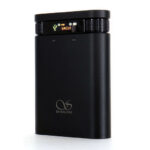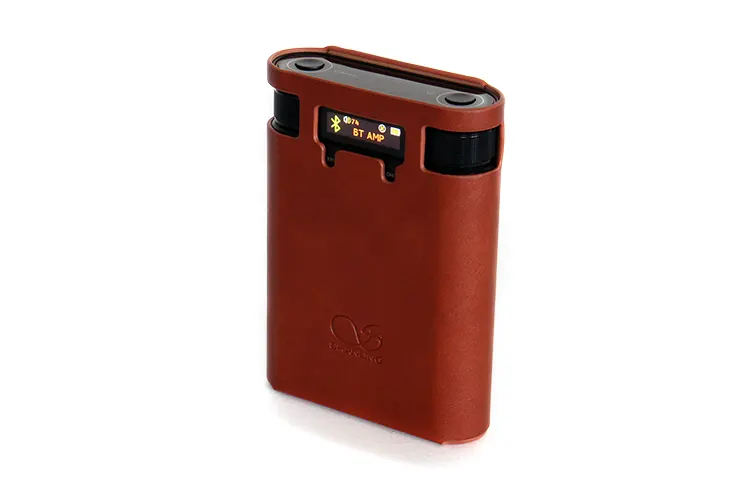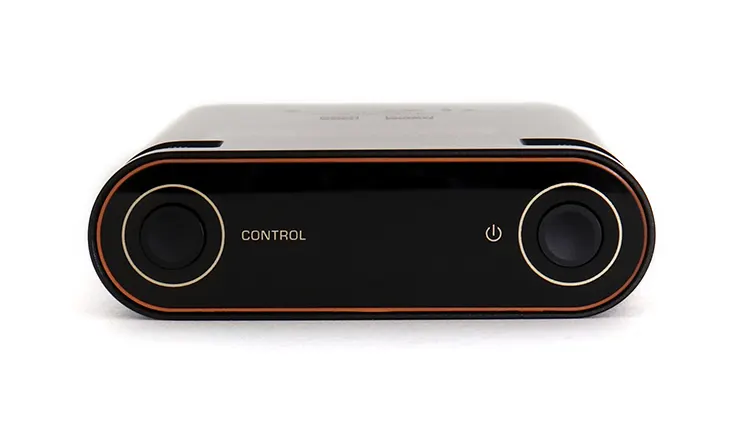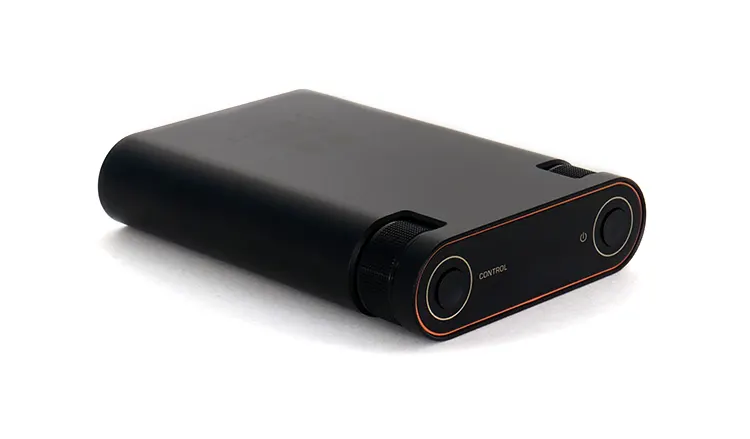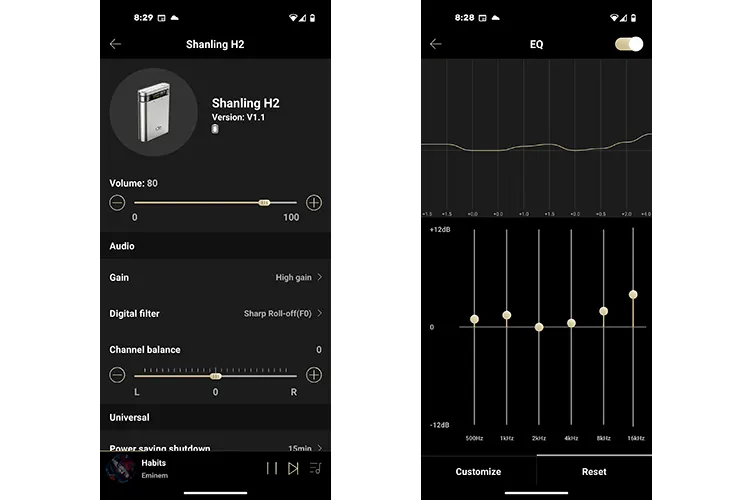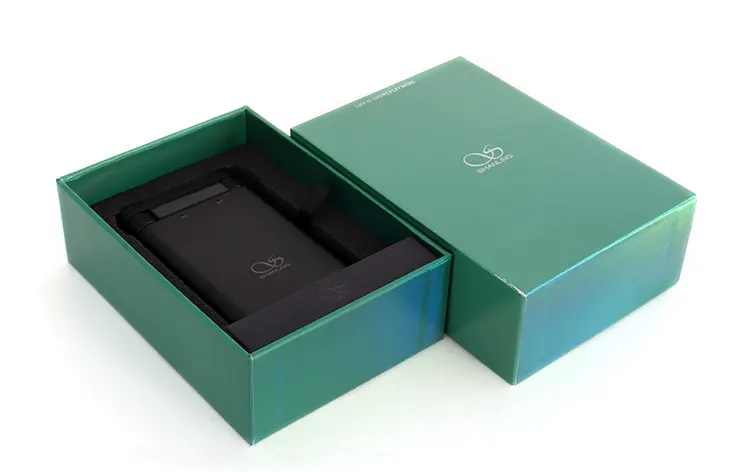Today, Louis reviews the Shanling H2, which is a new entry-level portable CS43198 DAC and headphone amplifier with up to 680mW of balanced output power. It is priced at $169 MSRP.
Disclaimer: This sample was sent to me in exchange for my honest opinion. Headfonics is an independent website with no affiliate links or status. I thank Shanling for their support.
To learn more about Shanling products we previously assessed on Headfonics click here.
Note, that this article follows our current scoring guidelines which you can read here.
Shanling has further expanded its popular H series portable amp and DAC lineup with the release of the H2.
The H2 shares some features with the higher-end H5 and H7 offerings but is scaled down somewhat and pitched as the most compact and affordable unit of the series, priced at $169 MSRP.
Consistent with the Shanling ‘House sound’, the H2 is a smooth-sounding portable device with decent power that will appeal to many potential buyers on a tighter budget for either home or portable use.
Features
DAC
The Shanling H2 uses a single CS43198 DAC inside the H2 plus dual SG-Micro 8626-2 amplifiers to feed the output ports.
An XMOS XU208 USB controller feeds the CS43198 and the Ingenic X1000 MIPS processor system platform handles the intricacies of the built-in media player and storage media.
The DAC section also counts on four filters that are selectable within the menu inside the Eddict app or from the built-in 0.99-inch LED screen and menu system. There are two roll-off filters, one sharp and one slow. Then there are two low-delay roll-off filters, one slow and one sharp for a total of four.
The Shanling H2 is a complex device; you can do a lot with this little box. The only hardwired feature omitted from the H2 on the H5 and H7 were the RCA output ports but we’re talking about a portable device here, are we not?
Decoding
The DAC section of the H2 handles PCM at up to 32-bit/384 and native DSD256. Bitrate capacity drops when you use files on an SD card. Files will only be read at the max bitrates of PCM 192k and DSD128.
The H2 omits MQA unfolding, which was available on the H5 and H7, nor does it do DST. A four-color LED indicates what bitrate you’re running on and you also get a visual cue on the built-in screen.
The H2 DAC section can kick into a USB 1.0 mode, again from within the built-in menu or the Eddict app to enable compatibility on most gaming consoles or devices with legacy USB ports.
Amplification
The Shanling H2 maximum output power is rated at 180mW on the single-ended 3.5mm connection and the balanced 4.4mm connector power jumps up to 680mW both measured with a 32Ω load.
That last number is not too bad. This device does seem to have the ability to drive many full-sized headphones within my arsenal.
Those two power output numbers strike a good balance between powering sensitive IEMs that do not require massive amounts of power, and the 680mW that’s sufficient for some big-boy headphones unless you want to push your IEMs rather hard.
There are two gain settings to choose from. The differences between the two gain settings are not too far apart, however. They seem to employ 10 to 12 decibels of difference to my ears. But the 100-step volume seems to have lots of headroom on the top range.
Bluetooth
Another method of tapping into the Shanling H2 is through the built-in Bluetooth 5.0 receiver which is one of the only implementations deserving criticism, the now-outdated BT 5.0 radio. Bluetooth codec support is rather limited as well with AAC, SBC, and LDAC support with no aptX support.
If your device is capable of transmitting LDAC-level Bluetooth then you’re golden because the H2 is capable of supplying 95% of what you get sonically from the USB DAC mode, especially if you’re using files that are under 192kHz rates. If your device doesn’t run LDAC, it will sound less impressive.
My last word here is that yes, you can obtain good sound from the H2’s Bluetooth implementation but it has its limitations. The transmission range and reception were acceptable, I’m pointing at the lack of aptX codecs, that’s all.
Design
Form factor
The Shanling H2 cabinet’s size is not too bad and is what I consider to be pocket-friendly. The H2 is available in two colors, black and silver.
The overall unit measures 71.5 x 100 x 21.5 mm which is compact enough for portable carry. However, the unit feels hefty, more so than other competitors at 185 grams or around 6.5 ounces.
I particularly like the dual side-mounted rotary controls. The control button with an adjacent rotary control knob is used to gain access to all the internal features. Most competitive models use a single rotary control knob and do not have half of the number of features found here to accredit the H2.
Aesthetics
Can we get the bad out of the way first? I would have preferred the headphone jacks on top like the H5 and H7 have if I were to use this unit on a desktop scenario. As configured, one would have to re-adjust pocket placement.
Just as well, if the headphone outputs were top mounted and you were to use this unit exclusively by feeding it a Bluetooth signal, then the pocket-friendly aspect would increase since all controls and connections would be on top and accessible.
The IO seems to cater to desktop users since all of the signal and power connections are on the bottom or opposite of the buttons, alongside the headphone jacks so the only possible pocket placement position would be with the buttons facing downwards which can work but just seems awkward.
I/O
Two bottom-mounted headphone ports cover the output section of the H2, one less compared to the H7, and an equal amount found on the H5. There’s a 4.4mm Pentaconn tap and a 3.5mm conventional single-ended tap.
The bottom panel also houses two USB-C ports that are isolated in function. One side is for feeding the DAC section and the other is used for charging the internal battery.
This is a desirable implementation since the only power going through the internal components in this configuration will come exclusively from the internal battery, and not from a noisy charging circuitry.
This allows the user to leave the unit plugged in without the worry of having to use an expensive adapter which in most cases can introduce noise into the circuitry. Any power source will do in this case. This power implementation also helps in obtaining a lower noise floor.
Controls
All the H2 controls sit on top of the unit, although who’s to say which side is the top since you can quickly flip the screen orientation to facilitate a proper viewing angle? The control arrangement is unique in that there are two rotary controls when most only incorporate one.
The control button gives access to the built-in options which can also be tweaked and modified through the Eddict player app.
A 3-second initial press and hold of the control button reveals the menu and short clicks scroll through the menu selections thereafter. The rotary kob facilitates the final adjustment.
A quick initial tap on the control button scrolls through the input selector. I’ve accidentally changed the input while the unit is in use trying to access the features menu.
It would have made better sense if the short tap activated the menu and the 3-second hold would switch inputs, but that just might be my preference.
The power button is just that, a power button. An initial long press turns the unit on, Once on a quick tap wakens the screen, and another long press shuts the H2 off, that’s about it. The rotary control below the power button controls the volume exclusively.
Eddict Player app
The Shanling app, called Eddict player is a media player with a 10-band equalizer. However, it also can become a media control center hub since it has DNLA, NAS, and cloud serviceability.
It can also access your mobile device’s internal storage and the H2’s internal microSD card storage of up to a 2TB capacity.
The app has lots of features but they seem to be hidden away. For example, it took me a long time to find the section of the app that interacts with the H2 or any other model compatible with the app from the Shanling lineup.
Just look for three uneven lines on the top, left-hand side on the initial screen, and expand that menu downward. Now look for the USB interface and click on that. That will take you to a section that allows you to choose the H2 or whatever gear you have connected to the USB-C port.
There’s a section in which you can choose one of the four digital filters, gain, balance, screen brightness, and screen off-time along with an auto-power-off feature and screen orientation.
The app is a bit complex to operate and I also noticed a soft-tuned sonic signature that comes across as too flat and non-dramatic compared to other players like the Jet Audio player or even compared to others like Foobar and VLC.
This app’s versatility level is high but it will take the average user lots of time to discover all of its hidden features.
Battery life
The Shanling H2 has a 2100mAh built-in rechargeable battery that gave me a good amount of usage time before needing a full charge. The H2 has an adjustable auto-off feature which also helps to save on battery life.
The charging system is isolated from the main circuitry and it uses a separate USB-C port for charging as mentioned. There’s no mention of wireless charging capability and I verified the absence of the feature.
When charging the H2, there are two ways of verifying the charging state. One is by simply looking at the front panel mounted charging LED that gives off basic information.
You can also look at the LCD screen and the 5-position 20% incremental battery indicator which is more informative compared to the blinking two-color LED.
Charging time took an average of just over 1.5 hours and battery life was as expected at just under 10 hours off the 4.4mm port and at 50% volume which is just under an hour of what Shanling specified I would get and that’s fine.
Packaging and Accessories
You get the main unit, of course. You also get two cables, a four-inch twisted cable set that is terminated on both ends with a USB-C connector, and the other is terminated on one end with a USB type A connector and that cable is approximately 34 inches in length.
There are three pieces of literature inside the box, a warranty information leaflet, a quick-start guide, and a small product catalog.
There is a custom cover available from Shanling for the H2 but it’s a separate purchase. If I were Shanling, I would simply raise the overall price by a few bucks and throw them in as an included accessory. It’s a necessary accessory in my opinion.
Click on page 2 below for my sound impressions and selected comparisons.


